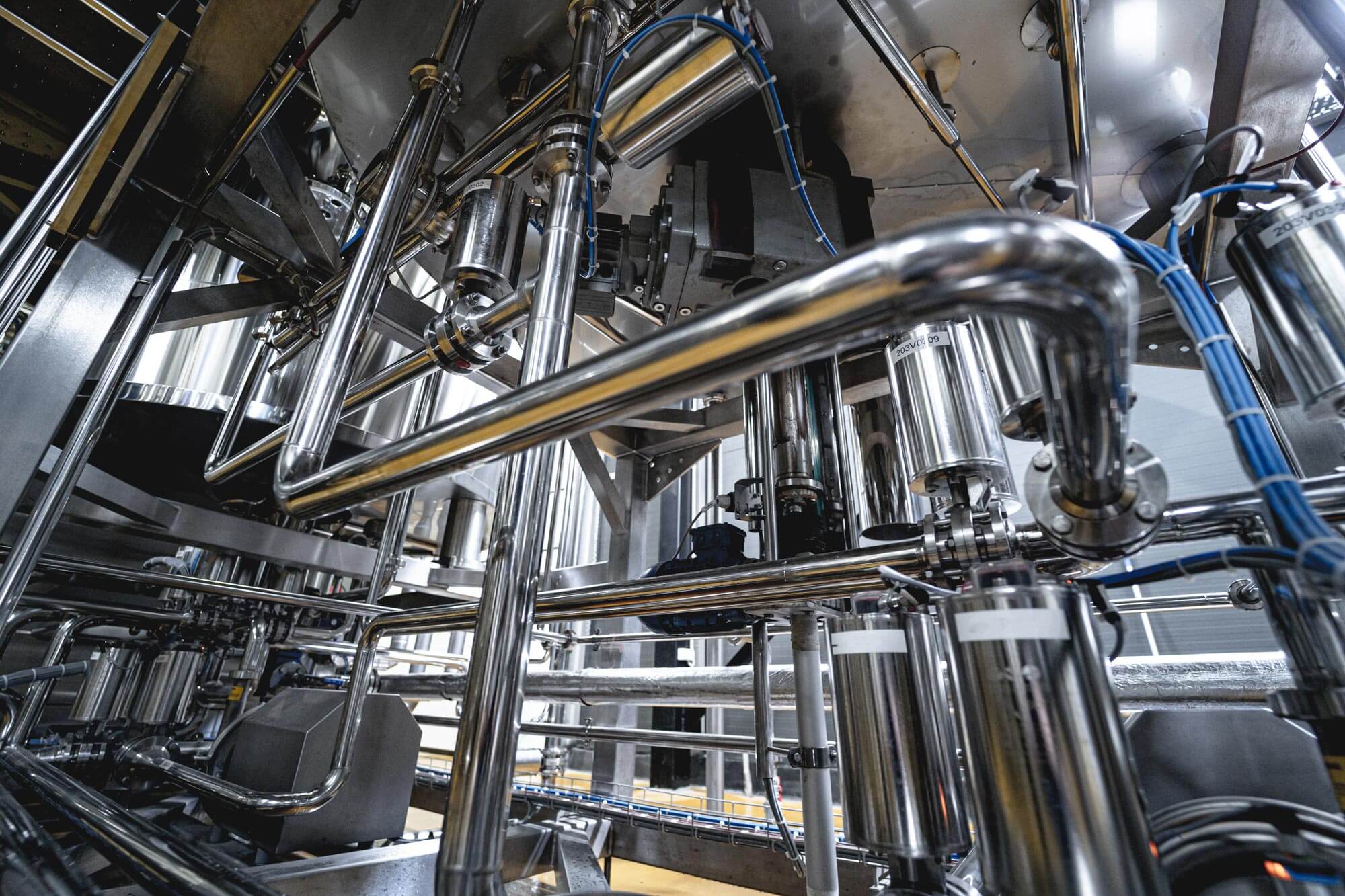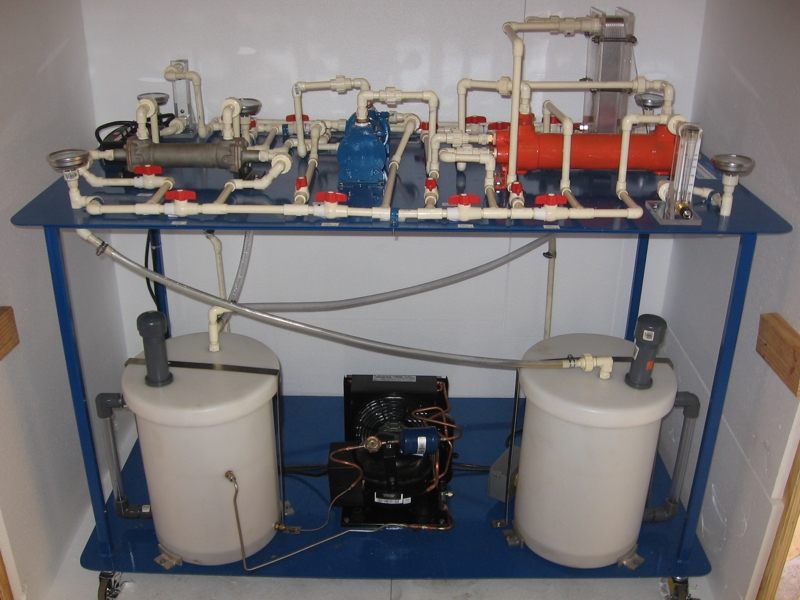Your Comprehensive Guide to Using DVS Heat Transfer Systems in Renewable Energy Projects
Discovering the Conveniences and Applications of Heat Transfer Solutions in Modern Market
Heat transfer systems play a vital role in modern-day industry. They incorporate various systems such as convection, radiation, and conduction, each adding to reliable thermal monitoring. Industries like production and aerospace advantage greatly from these systems. As innovations continue, the assimilation of cutting-edge materials and innovations promises to boost power efficiency. This advancement increases important inquiries regarding the future implications for sustainability and functional expenses across numerous sectors. What exists ahead in this ongoing makeover?
Comprehending Heat Transfer Concepts
Heat transfer principles are basic to the operation of numerous industrial systems. These concepts incorporate the systems of conduction, convection, and radiation, each playing a vital function in taking care of thermal power. Understanding conduction includes analyzing how Heat relocates with strong products, while convection pertains to Heat transfer in liquids, driven by fluid movement. Radiation, distinctive from the other 2, includes energy transfer via electromagnetic waves. The effectiveness of Heat transfer impacts system performance, power intake, and general performance. Reliable thermal management is crucial in processes such as cooling, heating, and Heat recovery. By mastering these principles, markets can optimize their operations, minimize power prices, and enhance equipment durability, consequently adding to an extra sustainable and effective industrial landscape.
Key Types of Heat Transfer Solutions
While numerous industries utilize Heat transfer systems for diverse applications, several key types stand apart because of their details features and effectiveness. The most typical types include radiation, convection, and conduction systems. Conduction systems transfer Heat through straight call in between products, making them efficient in solid-state applications. Convection systems, on the other hand, utilize fluid activity to move Heat, suitable for home heating or cooling down gases and liquids. Radiation systems run without a tool, relying upon electromagnetic waves to move Heat, perfect for high-temperature environments. Each kind offers unique purposes, permitting markets to tailor their Heat transfer solutions based upon functional requirements, energy efficiency, and cost-effectiveness. Recognizing these systems is essential for optimizing performance in different industrial setups.
Industrial Applications of Heat Transfer Technologies
The application of Heat transfer innovations in industry plays an important duty in enhancing energy effectiveness and optimizing procedures. DVS Heat Transfer Systems. By carrying out innovative Heat exchange systems, firms can substantially lower their environmental influence while enhancing overall efficiency. This combination not just fosters sustainability but additionally aligns with modern regulatory and consumer demands for greener methods
Energy Effectiveness Improvements
As industries significantly prioritize sustainability, power performance enhancements in Heat transfer innovations have actually ended up being essential for minimizing operational expenses and ecological effect. Enhanced Heat exchangers, for circumstances, utilize sophisticated products and layouts to maximize thermal efficiency while reducing energy consumption. Incorporating variable rate drives in pumping systems permits for better control of fluid flow, leading to considerable energy financial savings. The execution of smart sensors and automation offers real-time tracking, allowing adjustments that optimize power use. Additionally, waste Heat recovery systems capture excess thermal energy, transforming it right into functional power. These innovations not just boost power effectiveness however likewise add to a more lasting commercial landscape by reducing greenhouse gas discharges and supporting compliance with environmental policies.
Process Optimization Techniques
Refine optimization methods are important in boosting the effectiveness and efficiency of Heat transfer technologies in industrial applications. These methods include refining processes to take full advantage of Heat transfer performance while minimizing power usage and operational expenses. Approaches such as computational liquid characteristics (CFD) modeling enable designers to replicate and evaluate Heat transfer scenarios, recognizing areas for improvement. Furthermore, real-time monitoring systems can give important data on temperature slopes and flow rates, enabling modifications that maximize performance. Executing innovative control methods, such as predictive analytics, can boost system responsiveness to varying functional demands. By using these optimization methods, sectors can accomplish greater thermal effectiveness, reduced downtime, and enhanced item top quality, eventually causing enhanced competitiveness in the industry.

Environmental Effect Decrease
While industrial Heat transfer modern technologies are crucial for operational performance, their application also provides opportunities for substantial ecological effect reduction. By boosting power effectiveness, these systems decrease fuel usage, leading to lower greenhouse gas discharges. Progressed Heat exchangers can recuperate waste Heat, rerouting it to preheat inbound fluids, consequently reducing energy requirements. On top of that, the integration of Heat transfer innovations in eco-friendly power systems, such as solar thermal and geothermal applications, sustains the shift to sustainable methods. Industries that utilize these technologies also benefit from minimized operational prices and enhanced regulatory compliance. Overall, the calculated execution of Heat transfer systems not only boosts productivity however likewise fosters an extra lasting industrial landscape, adding to global ecological goals.
Benefits of Reliable Heat Transfer Solutions
Effective Heat transfer systems provide considerable advantages in modern industry, primarily via enhanced energy efficiency and price decrease. By maximizing thermal administration, these systems reduce energy waste, resulting in reduced operational expenses (DVS Heat Transfer Systems). Services can attain higher sustainability and boosted productivity.

Energy Efficiency Improvements
As sectors increasingly prioritize sustainability and cost-effectiveness, energy effectiveness enhancements in Heat transfer systems have actually become a vital emphasis. Enhanced effectiveness in these systems brings about reduced power consumption, enabling facilities to operate more sustainably. By try this web-site optimizing Heat transfer approaches, sectors can lessen waste Heat and accomplish much better thermal administration, considerably reducing their ecological effect. Advancements in innovations such as Heat exchangers and insulation products add to enhanced performance and reliability. Applying energy-efficient Heat transfer solutions not just sustains conformity with regulatory standards yet likewise fosters a society of advancement within companies. Ultimately, these renovations are essential in straightening industrial procedures with worldwide energy preservation goals, leading the way for a more lasting future in manufacturing and handling fields.
Expense Decrease Opportunities
By enhancing Heat transfer systems, markets can reveal considerable cost reduction possibilities that boost their bottom line. Effective Heat transfer minimizes power usage, leading to reduced utility costs and decreasing operational costs. Additionally, improved system performance reduces the demand for repair and maintenance, in addition saving expenses over time. Enhanced Heat transfer can also prolong tools lifespan, allowing business to postpone capital investment on replacements. Waste Heat recuperation systems can transform excess Heat right into usable power, additionally driving down expenses. These systems not just streamline processes however additionally add to sustainability initiatives, positioning firms favorably in a significantly eco-conscious market. In general, the monetary advantages of reliable Heat transfer systems are considerable and essential for affordable benefit.
Innovations in Heat Transfer Solutions
How can modern industry enhance its operations through cutting-edge Heat transfer services? By embracing sophisticated materials and innovations, sectors can substantially boost thermal read this post here performance and efficiency. Developments such as nanofluids, which enhance Heat transfer capabilities past standard liquids, and stage modification materials that store and launch thermal power, are obtaining grip. Furthermore, the integration of smart sensing units and IoT gadgets enables real-time monitoring and optimization of Heat transfer processes, reducing waste and boosting system responsiveness. In addition, additive production methods enable the production of even more complicated Heat exchangers that make best use of surface area while reducing material use. Jointly, these advancements drive operational performance and develop affordable benefits in various fields, including production, aerospace, and power.
The Function of Heat Transfer in Sustainability Initiatives
While the push for sustainability proceeds to reshape sectors, the function of Heat transfer innovations comes to be progressively essential in attaining ecological goals. Efficient Heat transfer systems help with power efficiency by maximizing thermal management in various procedures, considerably lowering energy usage and greenhouse gas exhausts. Progressed Heat exchangers are utilized in industrial applications to recover waste Heat, thus minimizing energy waste. Furthermore, innovations such as phase modification products enhance thermal storage space, adding to renewable energy combination. The adoption of sustainable fluids in Heat transfer systems can decrease environmental effect. By prioritizing effective Heat transfer, markets not just boost functional efficiency yet additionally straighten with global sustainability initiatives, promoting a cleaner, a lot more lasting future.
Often Asked Concerns
Exactly How Do Heat Transfer Equipments Influence Power Prices in Production?
Heat transfer systems considerably influence energy costs in manufacturing by boosting efficiency, decreasing waste, and maximizing thermal administration. These enhancements lead to lower operational expenditures, inevitably profiting overall efficiency and productivity in industrial operations.
What Maintenance Is Needed for Heat Transfer Equipments?
Upkeep for Heat transfer systems includes normal inspections, cleaning of parts, inspecting fluid levels and problems, changing worn parts, and ensuring correct insulation. These activities improve efficiency, extend life-span, and go to my blog prevent costly break downs in operation.
Exist Security Worry About Heat Transfer Equipments?
Security worry about Heat transfer systems include possible leaks, stress build-up, and thermal threats. Appropriate design, routine maintenance, and adherence to security methods are vital to minimize these dangers and ensure safe operation in industrial settings.
How Can I Select the Right Heat Transfer System for My Organization?
Choosing the ideal Heat transfer system includes examining factors such as efficiency, application demands, spending plan constraints, and safety requirements. A comprehensive evaluation of these components will certainly aid guarantee perfect performance and dependability in service procedures.
What Prevail Failures in Heat Transfer Systems and Their Causes?

Comprehending transmission entails analyzing exactly how Heat relocates through solid products, while convection pertains to Heat transfer in fluids, driven by fluid movement. By maximizing Heat transfer techniques, markets can decrease waste Heat and achieve much better thermal administration, substantially lowering their environmental effect. Waste Heat recuperation systems can change excess Heat right into useful power, further driving down prices. Advanced Heat exchangers are used in commercial applications to recover waste Heat, therefore reducing energy waste. Typical failings in Heat transfer systems consist of leakages, corrosion, and inefficient Heat exchange.